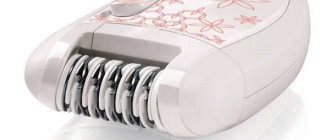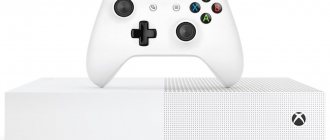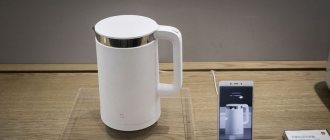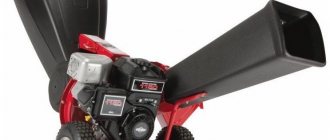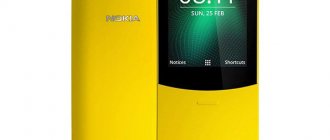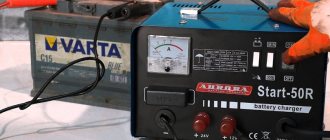| Place | Name | Characteristics in the rating |
| The best thickness gauges for paint coatings |
| 1 | Richmeters GY910 | The most compact thickness gauge |
| 2 | Etari ET-11P | The best combination of price and quality |
| 3 | TM-20MG4 | High measurement accuracy |
| 4 | CarSys DPM-816 PRO | The best among miniature thickness gauges |
| 5 | RECXON RM-660 | Ergonomic design |
| The best universal thickness gauges |
| 1 | Etari ET 555 | Tolerates sub-zero temperatures well, has an ultraviolet lamp |
| 2 | CHY-115 | The optimum ratio of price and quality |
| 3 | Aktakom ATE 7156 | Better measurement accuracy |
| 4 | CONDTROL Paint | Convenient and intuitive interface |
| The best ultrasonic thickness gauges |
| 1 | MEGEON 19130 | The most functional, ideal for finding defects |
| 2 | TEMP-UT1 | Large selection of functions |
| 3 | MEGEON 19220 | High quality workmanship |
The best ultrasonic thickness gauges
This is the most versatile type of such devices, which is used to work with completely different materials - metal, plastic, glass. It is convenient for polishers, paint controllers, insurers and appraisers. There are 3 thickness gauges of this type presented in this review category.
Horstek TC 015
The Horstek TC 015 device is aimed at measuring the thickness of coatings of aluminum and iron materials. First of all, the device is designed for use by motorists. With its help, machine parts are checked for additional painting, the depth of the anti-corrosion layer is assessed, and the quality of treatment with varnish, primer, and putty is monitored. It copes with its tasks without compromising the integrity of the surface.
Advantages
- Suitable for use in winter - withstands low temperatures;
- Low degree of reading error;
- Comfortable wrist strap;
- Wide display;
- The sizes are not large;
- 12 month warranty.
Flaws
- Frequent calibration is required - once every 5-7 checks;
- Doesn't check quickly;
- High price.
Horstek TC 015 is the best choice for those who are planning to purchase a used car. Thanks to him, it is possible to assess the true condition of the body and determine whether it was repainted, for example, after an accident.
Novotest UT-1
The ultrasonic thickness gauge “Novotest UT-1” is designed to work with steel, alloys, plastic, and cast iron. But for this there must be free access to the object of control - pipes, tanks, building structures. The assessment method involves the use of a special liquid, which can be water, grease, oil, cyatim, but the accuracy of the readings does not depend on its type. The device works with both rough and corroded and updated surfaces. The test results are displayed in large numbers on a large display.
Advantages
- Wide range of measured thicknesses;
- Good measurement speed;
- Low level of reading error – ±0.001T;
- Works without a break for up to 10 hours;
- Supported temperature range – from -5 to +40 degrees;
- Light weight of 0.2 kg.
Flaws
- Very high price;
- The error increases when measuring the thickness of fine-grained coatings.
Novotest UT-1 is powered not by batteries, but by rechargeable batteries, which, if necessary, can be charged with the appropriate device included in the kit.
Starmeter TM-8811
The measuring device “TM-8811” in the rating of thickness gauges is distinguished by its versatility and has a wide selection of operating modes with various materials: red copper, zinc, aluminum, cast iron, steel, quartz glass, polyvinyl chloride, polyethylene. Each of them has its own ultrasound propagation speed in the range of 500-9000 m/s, which increases the accuracy of the readings. It provides data in the context of 1000-200000 microns, this guarantees quality control of a wide range of coatings, including multilayer ones. Reviews indicate that the device is easy to control; all buttons are located in a visible place.
Advantages
- Weight 250 g;
- The accuracy of the readings varies within +/- 0.5%;
- Reliable connection with the computer;
- Continuous metering option;
- Small measurement step – 0.1 µm;
- Auto power off.
Flaws
- Not a very large screen;
- No display backlight;
- Requires 4 batteries for power.
The speed of sound of the Starmeter TM-8811 thickness gauge depends on the material; it is the highest for aluminum (6320 m/s), magnesium (6310 m/s) and titanium (6070 m/s).
The best electronic thickness gauges
These are multifunctional devices that usually cost more than their magnetic counterparts. They have high reading accuracy and serve as car paint thickness gauges. With their help, it is possible to assess the condition of the putty layer, rust, soil and even dust on the metal surface. 2 models, selected based on test results and customer reviews, cope with this with dignity.
Etari ET-11P
The coating thickness gauge “Etari ET-11P” was created specifically for operation under large temperature differences - it operates in the range from -25 to +50°C and is suitable for use in winter. However, this factor does not affect the accuracy of the readings. The weight of the device is 157 g and you can hardly feel it in your hand. Automatic detection of material type allows even non-professionals to use the tool.
The main advantage is considered to be the correct determination of the coating thickness of both non-ferrous and ferrous metals, however, there is also a limit - up to 1000 microns. Over time, the results may not be entirely correct, so periodically calibrating the device is required, which is completed in a few minutes. The display backlight makes it easier to read data, but does not “eat” a lot of energy, and the indicator warns in advance about the battery being low.
Advantages
- Adequate price;
- 1.5 year warranty;
- Works on ferrous and non-ferrous metals;
- Menu in Russian;
- Does not fail when used in cold weather;
- Quick determination of thickness.
Flaws
- Different principles of operation - electromagnetic on ferrous metals, eddy current on non-ferrous metals.
The “Etari ET-11P” model is considered to be quite accurate, but the results depend somewhat on the values: for 0-199 µm the permissible deviation from the norm is ±10 µm, for 200 µm up to 1000 µm – ±3%+10 µm
Carsys DPM-816 Pro
The Carsys DPM-816 Pro device is compatible with non-ferrous and ferrous metals: steel, aluminum alloys, zinc, iron. It is actively used by motorists to assess the condition of the car body and is widely used in industry. High accuracy of operation is maintained throughout its entire service due to automatic calibration. However, if necessary, manual adjustment is also possible.
The thickness gauge is designed to determine the thickness of paint and varnish coatings. This model has an informative LCD display with a wide range of operating temperatures – from -25 to +50°C. The device notifies you with a sound signal about the type of metal base and when the measurement is completed. Carsys DPM-816 Pro has 5 operating modes in various conditions and is equipped with responsive control buttons.
Advantages
- Wide measurement range – 0-3000 microns;
- Low percentage error: ± 1%;
- Light weight – 50 g;
- Bright backlight;
- Large numbers displaying information on the screen;
- Fast measurement – 0.5-1 sec.
Flaws
- The error depends on the thickness of the coating.
The thicker the paint layer, the higher the risk of measurement error. On average, at 0-3000 microns it is ±1%, and at 3000-3500 it increases to ±3%.
Constant Bulat 1M modernized
The Constant Bulat 1M device deserves a place in the ranking of the best thickness gauges due to the flexibility of its settings and high accuracy of operation, the error of which does not exceed ± 0.002T+0.05. It does not change at low temperatures, the device can withstand such influences in the range from -20 to +50°C, but if necessary, you can order a more frost-resistant model. If you take frequent measurements, there are no problems with storing results in the internal memory; its capacity is 2000 measurements.
The ultrasound propagation speed in this thickness gauge is 1000-9000 m/s, which makes it possible to better determine the depth of various types of coatings. But if it exceeds 300 microns for steel, then the device will be ineffective. Its weight is 170 g, and this includes two batteries, which last a long time for the uninterrupted operation of the device. The main feature of this model is the measurement of surfaces, both metal and other - cars, sheets, pipes, etc.
Advantages
- Sensitive digital control button;
- Operates up to 150 hours on the same batteries, although the backlight reduces this time;
- USB connector for connecting to a PC;
- Several wear-resistant converters for various purposes;
- Adjustable speed control;
- Specified degree of discreteness.
Flaws
- High price;
- The control buttons are not labeled.
How to choose a car paint thickness gauge
Any device, including a thickness gauge, is selected according to the characteristics and functions that the owner needs. First, it is important to decide where you plan to use the device. How often this will happen, and also how accurate measurements are needed.
Scope of application of thickness gauges
Technical devices are used not only for car tuning. The thickness gauge is used in aviation, construction, and shipbuilding. The device is in demand in any field where it is necessary to measure paint thickness. It is a must-have for a craftsman who paints or tunes cars.
For each application, a thickness gauge with the required reading accuracy is used
Thickness gauges are used during examination. High-precision models are chosen for this application. They measure down to a fraction of a micron. In everyday use, for purchasing a car or for other purposes, simple thickness gauges with a larger reading error are chosen.
Important! A test of paint thickness gauges will help you decide on the choice of model.
Selecting a device by design and principle of operation
Its operating principle depends on the design of the device. This factor, in turn, determines which car is best to use this or that model.
Based on their design and principle of operation, thickness gauges for cars are divided into the following groups:
- Magnetic devices are most often in demand in everyday life by car owners. The sensor is a magnet built into the body of the product. It determines the distance to the metal of the car body. The readings are displayed on an electronic or mechanical display equipped with an arrow.
- Electromagnetic devices have a sensor that creates current induction. When you touch the car, the metal body forms a closed circuit. The sensor measures the density of the created magnetic field, which corresponds to the thickness of the paint.
- Eddy current devices operate on the principle of measuring the power of current created by induction inside the metal body of a car. The most accurate measurements are obtained on aluminum. Other alloys of non-ferrous metals have different current conductivities. The measurement result will be displayed with a larger error.
- Combined models are equipped with an electromagnetic and eddy current sensor. They are used on car bodies made of any alloys of non-ferrous metals. The principle of their operation is to measure the magnetic field density and current power.
- Ultrasonic models emit pulses during operation. The sensor picks up the sound signal reflected from the car body and, based on it, displays accurate data on the thickness of the paint.
Ultrasonic devices are packed with electronics and require careful handling, so they are sold in cases.
When choosing a thickness gauge based on its operating principle, it is worth remembering mechanical models. They are rare due to low demand. The device has a simple device, but is capable of measuring thick layers of paint or putty. The readings are inaccurate; they are displayed on a mechanical display with an arrow.
Select by other parameters
Price, manufacturer, design and other little things do not greatly affect the functionality of the device. You can buy an expensive thickness gauge from a well-known brand, which will work worse than a model with an unpromoted name in the middle price category. These parameters are considered according to your preference.
It is more important to pay attention to the error. The smaller it is, the more accurate the measurement. Additional functions expand the convenience and scope of use of the technical device. For example, there may be sensors that measure the thickness of rubber or fiberglass, making it possible to determine the degree of corrosion of the car body.
Additional options provide comfortable work. These include backlighting, sound signals, and auto power off. There are thickness gauges whose degree of protection allows you to work under water.
Advice! Since the thickness gauge is a high-precision measuring instrument, it is better to buy it in a case.
The best magnetic thickness gauges
Such devices operate by using magnetic properties. They change as the thickness of the paint or putty layer decreases or increases. This device provides information about the distance from the tip of the sensor to steel or iron, which ensures that the necessary data is obtained. The best models of this type include two options.
Chy 113 automobile
The Chy 113 thickness gauge is highly accurate, but it is also included in the rating because it is safe for the car body. It is primarily used to detect signs of accidents by measuring paint thickness. This is only possible on surfaces made of steel, cast iron and other magnetic ferrous metals.
The continuous measurement option improves the quality of use of the device and reduces inspection time. The backlit LCD display makes it easy to use in poorly lit areas. Simple and high-quality calibration improves the results of assessing the condition of the coating. In this case, it is enough to carry it out only once for 5 measurements.
Advantages
- Accuracy of readings;
- Measurement range – from 0 to 1000 microns;
- LCD backlight;
- Bright and clear screen;
- Durable housing;
- Easily determines the boundaries of areas to be repainted;
- Calibration washer and plate included.
Flaws
- Not very comfortable handle;
- Not universal in terms of choice of materials.
Stroypribor TM-20MG4
...According to reviews, the device is small in size, has a thin and neat body, and therefore fits comfortably in the hand...
Expert opinion
The key feature of this model, which makes it stand out among the TOP thickness gauges, is the ability to use it for working with galvanic, paint and varnish, sheet, film, electrically conductive and fire-retardant coatings. The device is suitable for use in construction, automotive production, and metallurgy.
TM-20MG4 can measure the thickness of the paint layer on cars of private owners. If necessary, it can be connected to a PC, all results are stored in the internal memory for 200 readings. Their error is very low - ±0.003 mm, but the more extensive the coating, the higher it is. The measurement range ranges from 0.2 to 0.5 mm.
Advantages
- Low current consumption;
- Works for a long time on the same batteries;
- Together with the converter, it weighs no more than 0.4 kg;
- Ferromagnetic base included;
- Durable cable;
- The warranty period is 1.5 years.
Flaws
- The screen is not big;
- The numbers are not large enough;
- Not very bright display.
The best eddy current thickness gauges
This is a rare type of device with this purpose, which is relevant for testing highly conductive surfaces made of non-ferrous metals, for example, aluminum. The principle of their operation is based on the use of Foucault eddy currents. Their size is affected by the distance from the base to the coil; the greater it is, the smaller this indicator. Basically, they are used to work with non-metallic coatings; this option is convenient for assessing the depth of the paint layer. Among 10 models, only one best thickness gauge was selected.
Megeon 19210
This eddy current type thickness gauge has excellent visualization of monitoring measurement results thanks to a bright and fairly large display. It is easy to operate due to the intuitive keypad. With its help you can work with products that have a slight curvature of up to 11 mm. However, this may slightly increase the error. The device runs on batteries, the charge of which is saved when it automatically turns off. The minimum thickness of the material being tested is 0.5 mm, so it is inconvenient for them to examine very thin sheets.
Advantages
- Weight – 0.063 kg;
- Wide measurement range – from 0.1 to 1800 microns;
- Withstands humidity levels up to 95%;
- Operates at temperatures from 0 to +40 degrees;
- Small sizes;
- Selecting units of measurement;
- Bright screen backlight.
Flaws
- Not suitable for measuring layers on non-ferrous metals;
- The minimum area is 12 mm.
The Megeon 19210 model shows accurate data, but calibration is still required from time to time. But it is not automatically performed, which somewhat complicates setting up the device.
What do you pay attention to when buying a thickness gauge?
The simplest device for calculating the thickness of a layer of paint and varnish materials can be made with your own hands - take an ordinary magnet and wrap it in a cloth (this protects the paint layer from scratches). The principle of operation is quite simple - the magnet will stick to normally painted surfaces, but will fall off on putty surfaces. This is due to the weakening of attraction due to the non-magnetic repair material. A serial dial thickness gauge works on a similar principle. It is quite simply designed, therefore, it will serve for a long time. The simplicity of the design ensures low cost; there is no need to provide power. However, such a product has a number of significant disadvantages that cancel out all its advantages: it is not very sensitive and is not able to provide good accuracy of indicators.
A more advanced design is the electromagnetic thickness gauge, which works by creating a magnetomotive force on the winding. Here, measurements are made by calculating changes in the electromagnetic field - a Hall sensor is used for this. The accuracy here is much higher, as is the sensitivity of the device, but the cost also increases.
The most expensive, but at the same time the most accurate equipment is considered to be an ultrasonic thickness gauge, the operation of which does not involve the use of magnets at all. This device can measure thickness not only on metal, but also on plastic body elements, for example, on bumpers. The principle of operation is based on the passage of a high-frequency sound signal through elastic and solid media and returning it back to the device - the echolocation base. Such products are usually used by professional craftsmen who restore body parts after an accident.
When choosing models for our rating of the best automotive thickness gauges of 2021, we were guided not only by the above factors, but also by user reviews, as well as the price-quality ratio of the equipment, so that it would be affordable for most of our readers. Now is the time to analyze the useful characteristics of such devices.
Types of paint thickness gauges
A thickness gauge is a technical device that allows you to measure the thickness of paintwork. It is most often used by car owners when buying a car, but there are other areas of application. The measurement occurs thanks to the sensitive sensor of the device. By capturing signals reflected from the metal car body, it determines the distance that corresponds to the thickness of the paintwork.
Thickness gauges differ in their operating principle, but all determine the thickness of the paintwork by capturing reflected signals from the main object
When choosing a thickness gauge for a car, they often give preference to ferromagnetic models. The device is cheap and gives accurate readings, but only if the body is made of steel or steel-based alloys.
Important! The ferromagnetic device does not measure the thickness of paintwork materials on bodies not made of ferromagnetic materials.
There are other types of devices:
- Electric vortex models make accurate measurements on cars whose body is made of non-ferrous metal alloys. On regular hardware, the readings will be inaccurate.
- Electromagnetic vortex models pick up a signal reflected from any metal base.
- Ultrasonic models are universal. They measure the thickness of the paint regardless of the base material on which it is applied.
Since modern foreign cars are produced with elements of plastic, composite and other non-metallic materials, ultrasonic devices are the only ones that will cope with the task.
Based on their type, thickness gauges are divided into classes:
- Class 1 includes cheap devices for cars with limited functions. Their advantage is reliability.
- Class 2 combined thickness gauges with more accurate measurements. However, their disadvantage is their slowness.
- Class 3 consists of expensive devices. They are equipped with additional functions and are characterized by high measurement accuracy.
The higher the class of the thickness gauge, the more capricious it is. Devices for class 3 cars must be periodically calibrated. In the cold they take inaccurate measurements.
